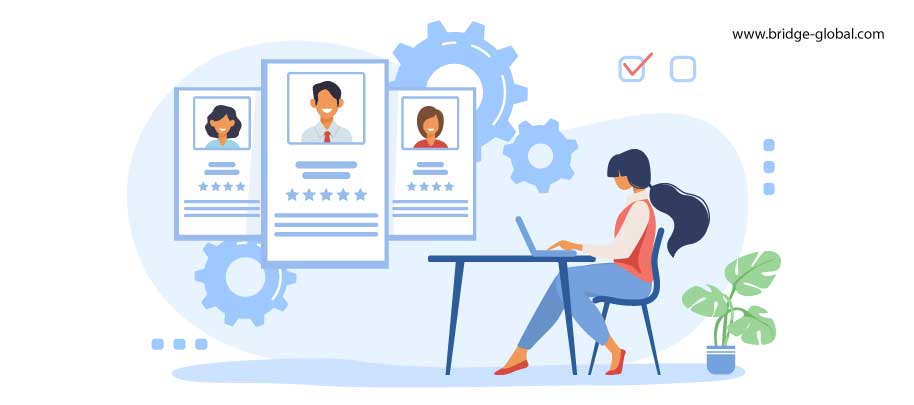How to choose the right partner for outsourcing and offshoring: 5 stepsHoe de juiste partner voor outsourcing en offshoring kiezen: 5 stappen 5 steg till att välja rätt partner för outsourcing och offshoringWie man den richtigen Partner für Outsourcing und Offshoring auswählt: 5 Schritte
 Selecting a partner offshore or nearshore can be a daunting job. Companies are far away, the cultural habits are different. Nevertheless, I believe that below guidelines and questions can help you in the quest.
Selecting a partner offshore or nearshore can be a daunting job. Companies are far away, the cultural habits are different. Nevertheless, I believe that below guidelines and questions can help you in the quest.
1. Start with asking yourself why you want to offshore?
Do you see offshoring as a low-cost solution for a few projects that you have? Or is it part of your long term vision to grow your company?
Een offshore of nearshore partner kiezen kan moeilijk zijn. Bedrijven zijn ver weg en de culturele gewoontes zijn anders. Toch denk ik dat onderstaande richtlijnen en vragen u kunnen helpen.
1. Begin met je af te vragen waarom u wilt offshoren?
Ziet u offshoring als een kostenbesparende oplossing voor een aantal van uw projecten? Of ziet u het als een lange termijn oplossing zodat uw bedrijf kan groeien?
Selecting a partner offshore or nearshore can be a daunting job. Companies are far away, the cultural habits are different. Nevertheless, I believe that below guidelines and questions can help you in the quest.
1. Start with asking yourself why you want to offshore?
Do you see offshoring as a low-cost solution for a few projects that you have? Or is it part of your long term vision to grow your company?
Die Auswahl eines Near- und Offshore-Partners kann eine entmutigende Aufgabe sein. Die Unternehmen sind weit entfernt und die kulturellen Gewohnheiten anders. Trotzdem glaube ich, dass die unten aufgeführten Richtlinien und Fragen bei der Suche helfen können.
1.Beginnen Sie sich selbst zu fragen WARUM sie Auslagern wollen?
Sehen Sie Offshoring als kostengünstige Lösung für ein paar Ihrer Projekte? Oder ist es ein Teil Ihrer langfristigen Vision ihr Unternehmen wachsen zu lassen? If you have a few projects that you want to do cheaply, you may want to find your supplier through a project website like elance or odesk. If you have a longer term vision, it makes more sense to search for the best matching company directly.
2. How do you plan to work: outsource projects or hire people?
The natural inclination of most people that start with outsourcing is to work on fixed price models. The perceived advantage is that your partner has the risk of delay or extra time spent. But in most cases, this fires back. The disadvantage is that you have to spend much time on the specification phase; plus you will get a lot of discussion about estimations and extra time spent.
The alternative is to hire people on a fixed monthly fee or on post-calculation. The advantage here is that you can influence who is working on your project and how they work. The disadvantage is that you will pay every hour spent (which is often also the case in the fixed price model although it looks like you don’t).
If you know what model works for you, you can screen the suppliers based on that model. If you don’t know, I would recommend inviting two or three supplier for a (skype) meeting and listen to their story on the plus and down sides of their model.
My personal experience is that long term results are only produced by going for a people-oriented model. You should be able to hand-pick the people that are working for you, you should have direct communication with them (if a supplier doesn’t allow this, you may also have another screening criteria). It should be your own team of people that are dedicated to making your company and project a success.
If you decide to go for a supplier that gives you the opportunity to select your people, you could simply ask them to send you some candidates and have an interview of them. You can do this with a few suppliers and the one that provides you with the right people, you get involved with.
3. How do you plan to communicate?
Many companies adapt (variants of) agile and scrum in their software development process. If you have such process, you will have a default way of communicating between your customers, your project managers and your programmers. You could map this communication process and search for a supplier that matches this process.
Then ask the supplier ‘what is your communication process’? and see if this matches your vision of how communication is supposed to work.
My personal experience has taught me that the most important part of offshore success (along with choosing the right people) is communication. Without going into the details, the basis for communication is having daily contact about your project with the offshore team + having weekly review-meetings in which you discuss whether the project and communication goes well or what can be improved. If a supplier doesn’t have any communication structure that looks like a daily/weekly rythm, I would take them off my list.
4. Do you involve a local company or not?
You can use google to search for companies all over the world or in a specific technology or country. You can also involve a company that has a local presence in your country. There are many companies from India or Eastern Europe that opened offices in Western Europe. And there are companies that are originally from your country and opened offices offshore or nearshore. The advantage of a local company is that they have experience in the cultural difference, in remote communication, in offshore project management. They have gone through the pitfalls of offshoring and can help you to prevent them.
My personal experience. When I started Bridge, I had no contacts, no experience. I randomly started searching for suppliers that could help me to setup my global IT staffing company. I have spent an incredible amount of time in searching for and working with nearshore and offshore suppliers. And the conclusion I made is that you have no influence on what they are doing and whom they are working with. After two years, I decided to set up my own offices. And still I work with a few suppliers, but that’s three or four from the thirty or forty that I have involved. Now we are a local offshore provider in Holland, Germany, Sweden and Denmark, with offices both offshore and nearshore. I strongly believe that the road to success in offshoring is much bigger by engaging a company like mine than to work directly with providers offshore or nearshore. Unless you are very lucky, you will go through the same process as I did.
5. Choose country or location
There are good and bad suppliers (and people) in every country. And each country has other pros and cons. My personal vision is that the above three criteria are by far the most important to use in your selection. If you get your own vision regarding the why and how clear and find a supplier that has a similar vision, you are bound to have a match. Country in that case doesn’t matter.
For some criteria to select the right country if that’s your basis for selection, please read this article.
Additional criteria
The first three criteria determine your success. The fourth has some additional influence. If you are still in doubt, you could use some additional criteria/tips like:
– How (fast) does the supplier respond to your request for information?
– Talk to some references
– Check for stability and track record
– Review some sample projects or case studies
– Have a skype call with the key offshore team members
– Do I have a good feeling about the account manager / the company?
– Pricing
– Do a trial project or trial period first






Een mooi stappen plan Hugo. Veelal wordt er alleen gekeken naar de kosten. Helaas vergeten veel bedrijven om ook de focus te leggen op de mensen. En dan bedoel ik de mensen van de leverancier die sturing geven aan de relatie. Uiteindelijk zijn het de mensen die het vertrouwen waar moeten maken. En zijn het de mensen die moeten samenwerken.
Ik heb me hier de laatste tijd op gestort en ben tot de conclusie gekomen dat investeren in een beter intermenselijke relatie een veel betere business case heeft dan bijvoorbeeld switchen van leverancier. En om dat dan te voorkomen zou je meteen aan het begin van het traject moeten investeren in die relatie.
Voorwaarde 6?
Hi Erik,
goede toevoeging! ik geloof absoluut dat de menselijke relatie cruciaal is. Inderdaad zou stap 6 kunnen zijn dat je tijd investeert in het bezoeken van elkaars kantoren en samen eens wat eten/drinken om elkaar beter te leren kennen. Deze investering moet vanaf dag 1 gemaakt worden omdat je anders een routine bouwt die afstandelijk is en dit is moeilijk weer recht te trekken.